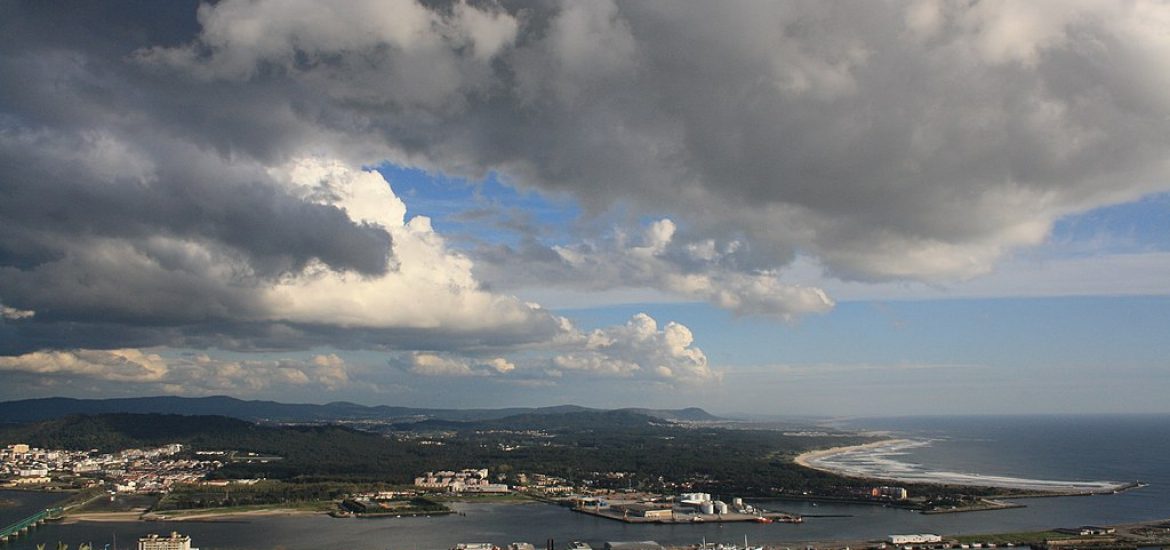
The world’s biggest floating wind turbine has gone online off the Portuguese coast.
The WindFloat Atlantic project has connected the first of three 8.4-MW MHI Vestas turbines planned for installation with the second ready to be connected.
The three turbines off Viana do Castelo (pictured) in Portugal are due to produce a combined 25 MW, enough energy to supply the equivalent of 60,000 users each year.
The Portuguese utility EDP Renewables has a 54.4-per-cent stake in WindFloat Atlantic along with French energy firm Engie with 25 per cent, Spain’s oil company Repsol at 19.4 per cent and California-based Principle Power, the developer of the floating platform, has a 1.2-per-cent slice.
It is the first floating wind-power project in the Atlantic Ocean.
The project is connected to the Portuguese mainland through a 20km cable and uses 100-metre chains to attach it to the seabed, deeper than the maximum possible depth for conventional offshore turbines.
The floating turbines are designed to be towed by standard tugboats, unlike conventional bottom-fixed wind projects, which require specialised ships for installation.
The project’s ability to extend beyond the depth of fixed offshore turbines means floating wind projects are not restricted to shallow coastlines and they can be placed further out to sea, in windier locations.
There is also less consideration about the visual impact.
A five-turbine, 50-MW floating offshore wind farm at Kincardine, also known as WindFloat, is due to be completed off the Aberdeenshire coast this year.
California or Japan both lack shallow coastlines for fixed turbines. Japanese solar firm Shizen Energy has signed a deal with a French floating offshore wind firm, Ideol, for a development near Kyushu.
Norwegian oil and gas giant Equinor developed the world’s first operational floating wind farm, Hywind, off Scotland’s northeast coast in Aberdeenshire in late 2017.
Hywind Scotland has five 6 MW turbines, with Equinor taking a 75-per-cent share and the UAE’s renewables firm Masdar with the remaining 25 per cent.
Similar technology is ready for widespread commercial development with Equinor now developing 11 floating turbines in the 88-MW Hywind Tampen project to supply its Gullfaks and Snorre oil rigs in Norway’s North Sea with green energy, rather than attempting to make an onshore grid connection or using fossil fuels.
Viana do Castelo. Picture credit: Wikimedia





